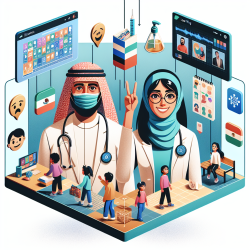Introduction
In the evolving landscape of health professions education, the integration of patient experiences into curriculum development is gaining traction. The study "Patient Experience in Health Professions Curriculum Development" explores the impact of patient involvement in curriculum creation, emphasizing the importance of their contributions in shaping the values of future healthcare providers. This blog post will delve into the findings of this research and provide insights for practitioners looking to enhance their educational approaches.
Key Findings from the Research
The study employed a hermeneutic phenomenology approach to understand the experiences of patients who contributed to the creation of a Verbatim Reader’s Theater (VRT) used in health professions curricula. Five key themes emerged from the analysis:
- Contextualizing Contribution: Patients emphasized the need for their contributions to be presented with sufficient context to preserve the intended meaning and avoid misinterpretation by students.
- Addressing Expectations: The study highlighted the importance of setting clear expectations for patient roles in curriculum development to ensure a fulfilling experience.
- Changing Health-Care Service Delivery: Patients expressed hope that their involvement would lead to improved patient care by influencing the values and attitudes of future healthcare professionals.
- Sharing Common Experiences: Patients found value in connecting with others who shared similar experiences, which enriched their contributions and provided validation.
- Coordinating Participation: Effective coordination and communication between patients and educators were crucial for meaningful participation.
Implications for Practitioners
For practitioners involved in curriculum development, this study underscores the importance of meaningful patient engagement. Here are some actionable insights:
- Foster Authentic Representation: Ensure that patient contributions are authentically represented in educational materials. This can be achieved by involving patients in the creative process and providing opportunities for feedback.
- Set Clear Expectations: Clearly define the roles and expectations of patient contributors to avoid misunderstandings and enhance the value of their participation.
- Promote Collaborative Learning: Encourage students to engage with patient narratives critically, fostering a deeper understanding of patient-centered care.
- Facilitate Connection: Create platforms for patients to share their experiences with each other, enhancing the richness of their contributions and promoting a sense of community.
Conclusion
Incorporating patient experiences into health professions curricula not only enriches the educational process but also aligns with the broader goal of patient-centered care. By reflecting on the findings of this study, practitioners can enhance their curriculum development strategies, ultimately leading to better outcomes for students and patients alike.
To read the original research paper, please follow this link: Patient Experience in Health Professions Curriculum Development.










